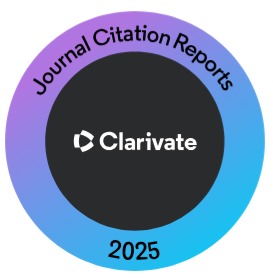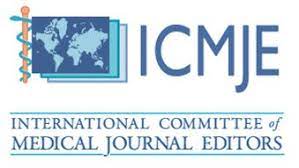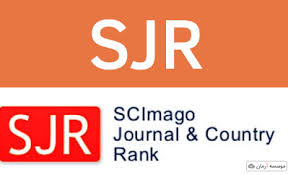The Association of Body Mass Index and Incidence of Diabetic Retinopathy in newly diagnosed Type 2 diabetes: A longitudinal Study in Karachi
Keywords:
body mass index, Diabetic retinopathy, incidence of diabetes retinopathy, Type 2 diabetes mellitus, Obesity, KarachiAbstract
OBJECTIVE: To elucidate the relationship between BMI, 25-29.9 kg/m²/obesity, and the incidence of Diabetic Retinopathy (DR) among DM patients.
METHODOLOGY: This is a prospective cohort study. The newly diagnosed type 2 diabetes mellitus patients were enrolled, with a baseline of 1675 subjects. Systematic random sampling was used to select the recruited patients at the Ophthalmology Department of Sindh Government Qatar Hospital, Karachi. Incident diabetic retinopathy (DR) was determined if any of the photos received a high rating for DR. Exclusively, participants with DR grades available results from the 2022 subsequent examinations were considered for inclusion in this study. Diabetic Retinopathy (DR) is classified into five stages per the ICDR scale: (1) no retinopathy, (2) mild NPDR, (3) moderate NPDR, (4) severe NPDR, and (5) PDR. BMI criteria: <25 kg/m² (normal/underweight), 25–29.9 kg/m² (overweight), and ?30 kg/m² (Obese). Univariate and multivariate logistic regression models were employed by SPSS version 27.
RESULTS: In total, a mean (SD) age of 61(7.5) years. Of these participants, 59.5% were male. A significant number of the participants were <25 kg/m² 821(49%). 856 (51%) of the patients came for follow-up after approximately 365 days. Diabetic Retinopathy was present in 197 (23%) of the patients.
CONCLUSION: In summary, our study, conducted within a substantial cohort of adults, demonstrated a correlation between higher Body Mass Index (BMI) and an increased risk of incident Diabetic Retinopathy (DR) over a 1-year follow-up period.
References
Estaji M, Hosseini B, Bozorg-Qomi S, Ebrahimi B. Pathophysiology and diagnosis of diabetic Retinopathy: a narrative review. J Investig Med. 2023; 71(3): 265-78.
Zhang X, Beckles GL, Chou C-F, Saaddine JB, Wilson MR, Lee PP et al. Socioeconomic disparity in use of eye care services among US adults with age-related eye diseases: National Health Interview Survey, 2002 and 2008. JAMA Ophthalmology. 2013; 131(9): 1198-206.
Sabanayagam C, Sultana R, Banu R, Rim T, Tham YC, Mohan S et al. Association between body mass index and diabetic Retinopathy in Asians: the Asian Eye Epidemiology Consortium (AEEC) study. Br J Ophthalmology. 2022; 106(7): 980-6.
Yang G-R, Li D, Xie Z. Association of Obesity with diabetic Retinopathy in US adults with diabetes in a national survey. Endocrine Connections. 2021; 10(7): 725-30.
Lin T, Gubitosi-Klug RA, Channa R, Wolf RM. Pediatric diabetic Retinopathy: updates in prevalence, risk factors, screening, and management. Current Diabetes Reports. 2021; 21: 1-11.
Abd AL-Hassan F, Al-Musawi HS. The Association between Global DNA Methylation and BMI: A Possible Prospective Contributor for Retinopathy Iraqi Patients. J Univ Babylon Pure Appl Sci. 2023: 83-101.
Ansari P, Tabasumma N, Snigdha NN, Siam NH, Panduru RV, Azam S et al. Diabetic Retinopathy: an overview on mechanisms, pathophysiology and pharmacotherapy. Diabetology. 2022; 3(1): 159-75.
Hukportie DN, Li F-R, Zhou R, Zheng J-Z, Wu X-X, Wu X-B. Anthropometric measures and incident diabetic nephropathy in participants with type 2 diabetes mellitus. Front Endocrinol. 2021; 12: 706845.
Sun C, Kovacs P, Guiu-Jurado E. Genetics of body fat distribution: comparative analyses in populations with European, Asian and African ancestries. Genes. 2021; 12(6): 841.
Tham Y-C, Liu L, Rim TH, Zhang L, Majithia S, Chee ML, et al. Association of cataract surgery with risk of diabetic Retinopathy among Asian participants in the Singapore epidemiology of eye diseases study. JAMA Network Open. 2020; 3(6): e208035-e.
Siddiqui AS, Javed S, Abbasi S, Baig T, Afshan G. Association between low back pain and body mass index in Pakistani population: analysis of the software Bank data. Cureus. 2022; 14(3).
Siddiqui M, Hameed R, Nadeem M, Mohammad T, Simbak N, Latif A et al. Obesity in Pakistan; current and future perceptions. J Curr Trends Biomed Eng Biosci. 2018; 17(2): 555958.
Liu R, Wang X, Wu Q, Dai L, Fang X, Yan T et al. Deepdrid: Diabetic Retinopathy—grading and image quality estimation challenge. Patterns. 2022; 3(6).
Han X, Jiang Y, Niu Y, Zhu Y, Huang W, He M. Differential associations between body mass index with diabetes and vision-threatening diabetic Retinopathy in an adult Chinese population. Br J Ophthalmology. 2022; 106(6): 852-6.
Xu Y, Wang A, Lin X, Xu J, Shan Y, Pan X et al. Global burden and gender disparity of vision loss associated with diabetes Retinopathy. Acta Ophthalmologica. 2021; 99(4): 431-40.
Møller A, Fincher CL, Thornhill R. Why men have shorter lives than women: effects of resource availability, infectious disease, and senescence. Am J Human Biology. 2009; 21(3): 357-64.
Stevens GA, White RA, Flaxman SR, Price H, Jonas JB, Keeffe J et al. Global prevalence of vision impairment and blindness: magnitude and temporal trends, 1990-2010. Ophthalmology. 2013; 120(12): 2377-84.
Piché M-E, Tchernof A, Després J-P. Obesity phenotypes, diabetes, and cardiovascular diseases. Circulation Research. 2020; 126(11): 1477-500.
Ramírez-Vélez R, Pérez-Sousa MÁ, González-Ruíz K, Cano-Gutierrez CA, Schmidt-RioValle J, Correa-Rodríguez M et al. Obesity-and lipid-related parameters in the identification of older adults with a high risk of prediabetes according to the American diabetes association: an analysis of the 2015 health, well-being, and aging study. Nutrients. 2019; 11(11): 2654.
Chan JCY, Chee ML, Tan NYQ, Cheng C-Y, Wong TY, Sabanayagam C. Differential effect of body mass index on the incidence of diabetes and diabetic Retinopathy in two Asian populations. Nutr Diabetes. 2018; 8(1): 16.
Lee S, Lacy ME, Jankowich M, Correa A, Wu W-C. Association between obesity phenotypes of insulin resistance and risk of type 2 diabetes in African Americans: the Jackson heart study. J Clin Transl Endocrinol. 2020; 19: 100210.
Gholami Chahkand MS, Esmaeilpour Moallem F, Qezelgachi A, Seifouri K, Pesaran Afsharian A, Sheikhzadeh F et al. Lipoprotein (a) as a predictor of diabetic Retinopathy in patients with type 2 diabetes: A systematic review. Diabetes Vasc Dis Res. 2023; 20(6): 14791641231197114.
Fu S, Zhang L, Xu J, Liu X, Zhu X. Association between abdominal Obesity and diabetic Retinopathy in patients with diabetes mellitus: A systematic review and meta-analysis. PloS One. 2023; 18(1): e0279734.
Sharif S, Manzoor F, Khan F, Naz S. Prevalence of Diabetic Retinopathy in Diabetic Subjects Visiting Diabetic Centers of Lahore, Pakistan: Prevalence of Diabetic Retinopathy in Diabetic Subjects. Pak J Health Sci. 2024: 65-9.
Babio N, Becerra?Tomás N, Nishi SK, López?González L, Paz?Graniel I, García?Gavilán J et al. Total dairy consumption in relation to overweight and Obesity in children and adolescents: A systematic review and meta?analysis. Obesity Reviews. 2022; 23: e13400.
Wang G-X, Fang Z-B, Li J-T, Huang B-L, Liu D-L, Chu S-F et al. The correlation between serum albumin and diabetic Retinopathy among people with type 2 diabetes mellitus: NHANES 2011-2020. PloS One. 2022; 17(6): e0270019.
Downloads
Published
How to Cite
Issue
Section
License
Copyright (c) 2025 Journal of Liaquat University of Medical & Health Sciences

This work is licensed under a Creative Commons Attribution-NonCommercial-ShareAlike 4.0 International License.
Submission of a manuscript to the journal implies that all authors have read and agreed to the content of the undertaking form or the Terms and Conditions.
When an article is accepted for publication, the author(s) retain the copyright and are required to grant the publisher the right of first publication and other non-exclusive publishing rights to JLUMHS.
Articles published in the Journal of Liaquat University of Medical & health sciences are open access articles under a Creative Commons Attribution-Noncommercial - Share Alike 4.0 License. This license permits use, distribution and reproduction in any medium; provided the original work is properly cited and initial publication in this journal. This is in accordance with the BOAI definition of open access. In addition to that users are allowed to remix, tweak and build upon the work non-commercially as long as appropriate credit is given and the new creations are licensed under the identical terms. Or, in certain cases it can be stated that all articles and content there in are published under creative commons license unless stated otherwise.























